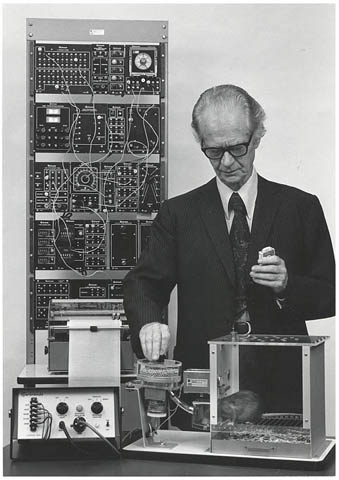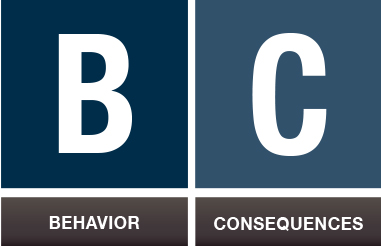The ABCs of Antecedents
 Lost to history is the name of the first person who applied the expression “A-B-C” to the relation between antecedent events, behavior, and its consequences. The expression stuck as a shorthand expression for Skinner’s three-term contingency. It is catchy and wildly popular (well, as wildly popular as anything is in behavior analysis) in both the academic classroom and those many places where behavior analysis is being used to improve the lives of people.
Lost to history is the name of the first person who applied the expression “A-B-C” to the relation between antecedent events, behavior, and its consequences. The expression stuck as a shorthand expression for Skinner’s three-term contingency. It is catchy and wildly popular (well, as wildly popular as anything is in behavior analysis) in both the academic classroom and those many places where behavior analysis is being used to improve the lives of people.
The relation between responses and the consequences that follow has received the bulk of our attention in both the laboratory and in practice. This relation is described as consequence control. Antecedent control is a term that people started using some time ago to describe the relation between events that precede the response and the occurrence of that response. It encompasses such things as establishing or motivational operations (e.g., limiting access to a nominal reinforcer to ensure that it so functions), instructions about what to do or not to do, and behavioral histories occurring prior to the contemporary learning environment. What notable antecedent event is missing from this list? Read on.
 In the 1930s, Skinner proposed the discriminated operant as a fundamental behavioral unit. It became to behavior analysis what the atom or perhaps the gene or amino acids are to other branches of science. The discriminated operant is a class of responses (B from the above expression) that are reinforced (C from above) in the presence of a stimulus, a stimulus that Skinner labeled the discriminative stimulus. The discriminative stimulus is not quite A from above, though. It is indeed an antecedent to a response, but, as the above examples imply, it is not the only antecedent. Now, antecedent stimulus is a “kinda OK” description of a discriminative stimulus within the A-B-C expression. But antecedent unqualified is not OK. Why not? Because the discriminative stimulus, or antecedent stimulus, is only one of several antecedents that contribute to determining whether or not the response will occur.
In the 1930s, Skinner proposed the discriminated operant as a fundamental behavioral unit. It became to behavior analysis what the atom or perhaps the gene or amino acids are to other branches of science. The discriminated operant is a class of responses (B from the above expression) that are reinforced (C from above) in the presence of a stimulus, a stimulus that Skinner labeled the discriminative stimulus. The discriminative stimulus is not quite A from above, though. It is indeed an antecedent to a response, but, as the above examples imply, it is not the only antecedent. Now, antecedent stimulus is a “kinda OK” description of a discriminative stimulus within the A-B-C expression. But antecedent unqualified is not OK. Why not? Because the discriminative stimulus, or antecedent stimulus, is only one of several antecedents that contribute to determining whether or not the response will occur.
Antecedent stimulus makes the sexy (OK, maybe I am little perverse) phrase “A-B-C” workable as a description of the three-term contingency, but it ain’t great, as they say. The reason is that “antecedent stimulus,” technically speaking could imply things other than the discriminative stimulus, such things as the broader context, a whole host of stimuli about which we know little, in which responding is reinforced. My point may seem nitpicky, and I won’t wait for the world to beat a path to my door, but it steers me, for one, away from using “A-B-C” to describe Skinner’s three-term contingency. And the range of events covered by the term “antecedent” makes it impossible to equate A-B-C with Skinner’s notion of the discriminated operant, which is the three-term contingency.



